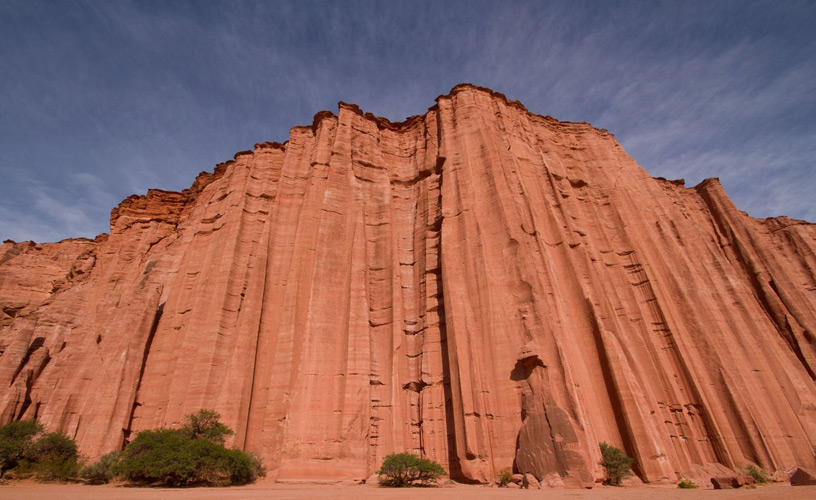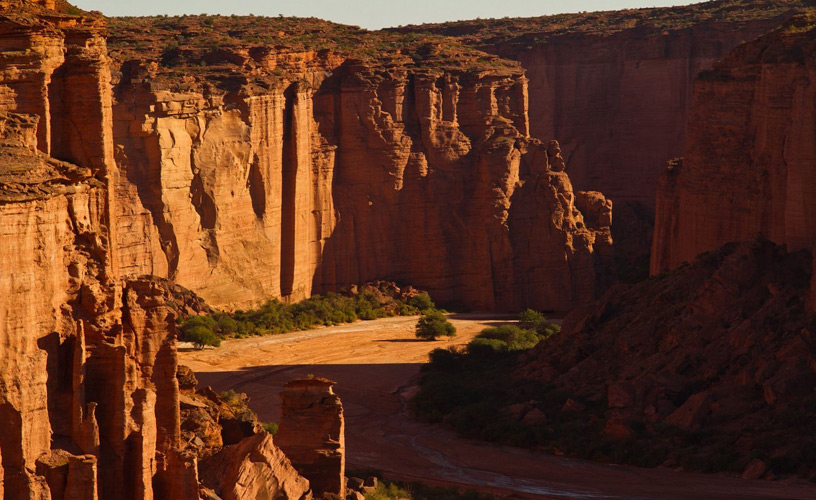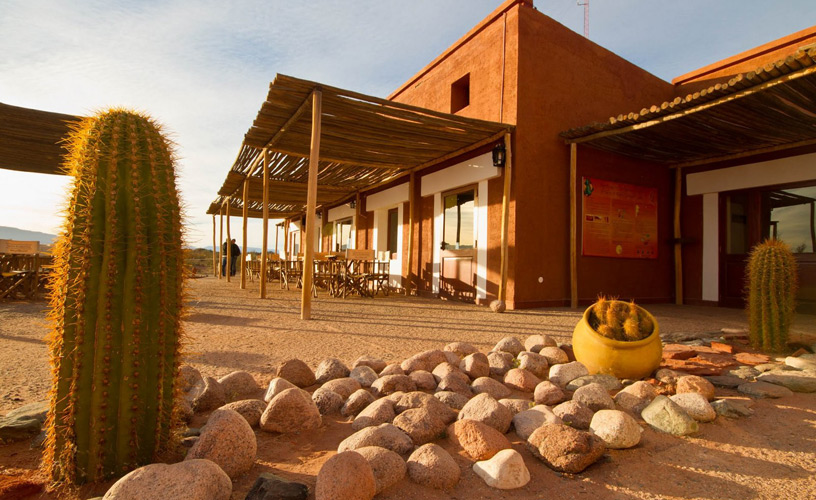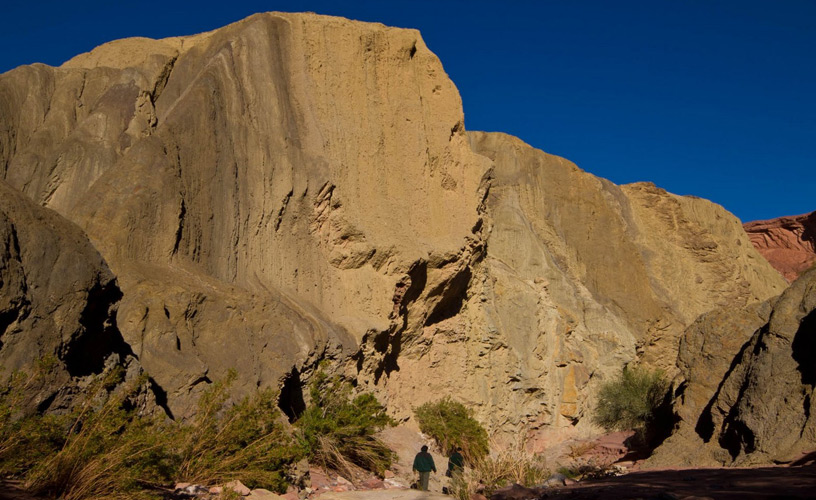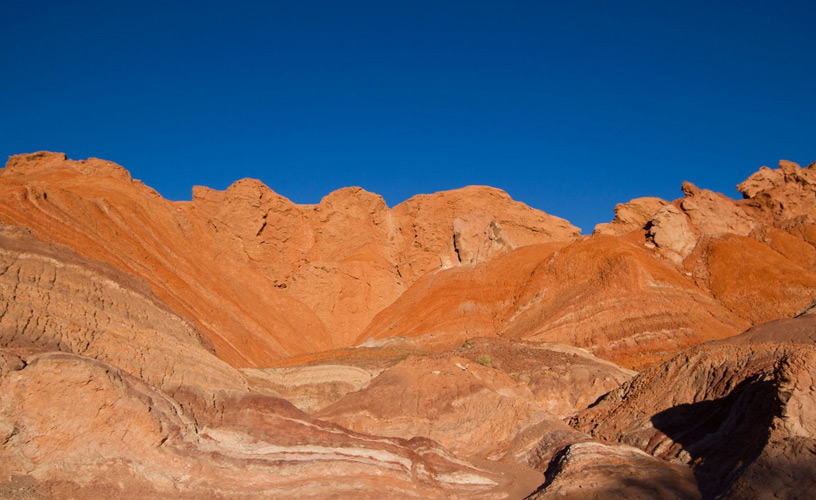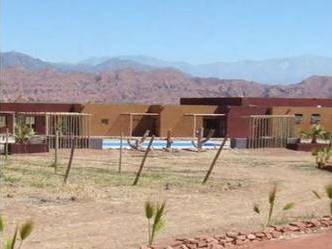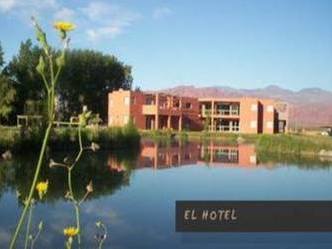Talampaya National Park
This is one of the most important attractions in the region of Cuyo and in particular in the Province of La Rioja. An inestimable geological treasure that may be visited by car, bicycle or on foot.
The access to the service area of Talampaya National Park is located at the 148th kilometer marker on National Route 76. The park office is the starting point for the tours that get deep into the canyon and unveil all its secrets. Besides a handicrafts market, there is a restaurant and coffee-house at the access point. There are also restrooms and a campsite that provides lodging to groups that choose the park to spend a few days in order to get to know all the available trails. Talampaya National Park occupies an area of approximately 215 thousand hectares, lying in the southern territory of the Province of La Rioja. It contains vestiges of life in the region millions of years ago. Its reddish and brownish hues take visitors to another world once ruled by dinosaurs and other extinct species.
Year after year, over 50 thousand tourists come to this region in Argentina to appreciate the red walls reaching over 150 meters of height, the condors nestling on its peaks and the curious shapes carved in the mountains by erosion. Some of them are el Monje (the Monk) or la Torre (the Tower). Others include el Centinela (the Sentry), el Rey Mago sobre el camello (the Wise Man riding a camel) and Tablero de Ajedrez (the Chessboard). Erosion is carried out by the wind and the rain. As these mountains are made of dirt and sandstone, many of these natural “sculptures” will disappear as time goes by and other shapes will materialize for men to give them new names. The former denizens of this zone named it “Talampaya” -which stands for "dry river of the tala (a native tree)"- to describe the local scenery. During most of the year, the river beds are practically dry. Only a thread of water runs along them according to the shape of the ground. On the other hand, during the rainy season, the volume of rivers becomes extremely plentiful, sometimes in a matter of hours, to such an extent that they feature an unusual kind of strength and roughness, dragging along everything they touch. Afterwards, the water disappears and the beds become dry again. They are turned into wide ideal roads to be traveled on a 4WD, a bike or on foot. Even sports such as wind-car racing are hosted in these scenes. Patancillo is the closest village to the park (30 kilometers away), followed by Villa Unión (60 kilometers), Patquía (120 kilometers) and the capital of La Rioja, 220 kilometers away. In 1975, the area was declared Provincial Park. It became a National Park in 1997 and once it was famous worldwide, it was declared World Heritage in 2000.
Pablo Etchevers
Parques Nacionales - Prensa
